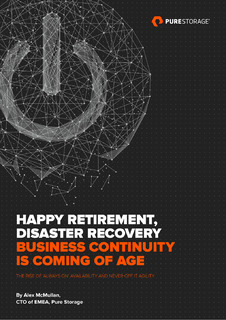At no other time has data played such a crucial role in the success of our commercial sector, and no more so than in financial services. We can see this powerfully illustrated when we pause to consider the growth of data driven ‘technologies’ such as Artificial Intelligence and their prevalence in driving innovation in areas such as risk management, multi-channel customer experience and fraud detection.
So keen is the sector to use data to deliver advantage, that PwC says startups with a strong AI-based offer attract some of the most lucrative funding – to the tune of $1 billion over the past two years.1
With this as our landscape, and the continued drive to deliver data-driven innovation the prospect of disruption and downtime is something that cannot be countenanced. This being the main reason why the senior management of most organisations continue to buy into tried-and-tested Disaster Recovery (DR) strategies. We all feel assured that if we ‘double up’ our investments in – as far as possible – fully redundant systems, if anything happens, “we have a plan in place that’s sure to get our most critical systems back up and running within X minutes, Y hours or Z days.”
However, the more digital our businesses become, the greater the risk of downtime. The more complex our IT architectures become – running on public cloud services and hybrid platforms, spanning the globe or embracing consumerisation of IT – the more difficult and costly Disaster Recovery gets.


